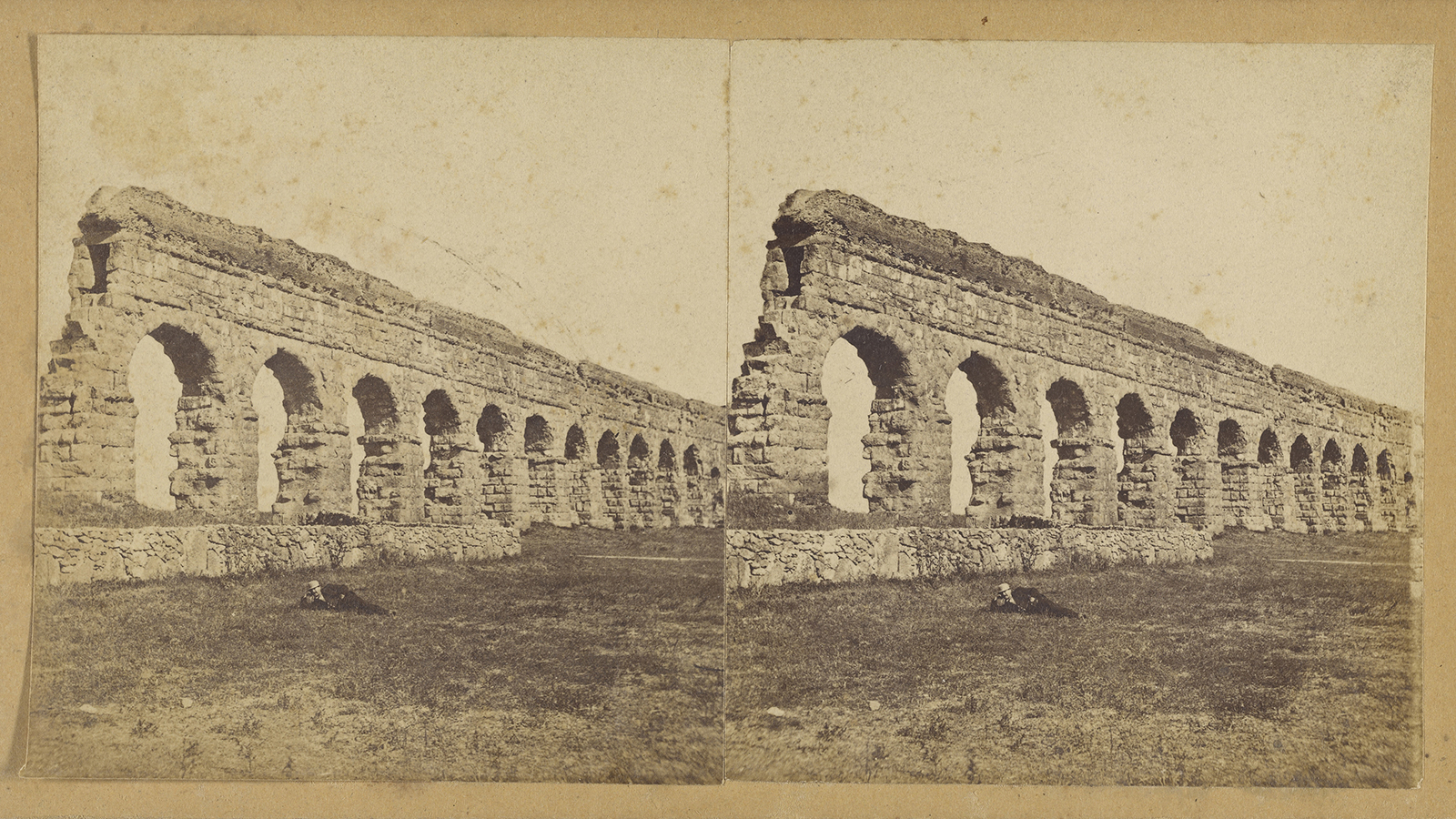
Joseph Spithöver, Aqueduct, Rome, Italy, ca. 1865, albumen silver print. Gift of Weston J. and Mary M. Naef, J. Paul Getty Museum (artwork in the public domain; photograph provided by the Getty Open Content Program)
Overview
“The Art Historical Image in the Digital Age” at the American Academy in Rome is a ten-day, intensive course designed to equip scholars of art from any historical period with the basic skills necessary to excel in the digital humanities: digital image management, organization, and analysis.
Since its inception, the disciplines of art history, as well as archaeology and conservation science, have focused to a great extent on the collection and analysis of images. Just as the ability to reproduce and circulate images through photography revolutionized the study of art in the nineteenth century, so too has digital imaging transformed the field in the twenty-first. The ease and speed with which digital images are now created, using a variety of apparatuses, has meant that scholars have access to and create ever-growing numbers of images, from reproductions of artworks to scans of documents and books. In addition, fields such as technical art history and archaeology have harnessed technologies such as laser scanning (lidar) to formulate research questions and produce new insights. This profusion of digital images has transformed research practices in these fields and raises both practical and conceptual questions. What constitutes image data? In what ways do archives, libraries, conservation labs, or even researchers themselves classify and organize this data, and how can it be analyzed? In what ways can researchers leverage digital-imaging tools and methods, while maintaining the rigor of their research and scholarship? Students participating in this summer school will begin to answer these questions by considering broader questions that affect art historical practice while at the same time gaining technical knowledge that will help make them critical and informed users of both image data and technical imaging technologies, such as 3D and spectral imaging.
This course takes advantage of the unique resources of the American Academy in Rome to prepare scholars to chart new directions in creating, managing, and using images for art historical research and scholarship in the digital age. Using as a case study a set of art historical image data in Rome, a city that the Academy founder Charles F. McKim deemed the very best place to study art, the course will familiarize participants with the basics skills necessary to organize and manage digital images. Participants will learn the key concepts and vocabulary to discuss image data and its integral role in the digital humanities. They will also develop skills to manage image data most effectively for art historical research, such as the creation and manipulation of image metadata and digital tools like Mirador. As part of their investigation of digital images, participants will also discuss the impact of digital technology on our experience of art using Rome as an example.
The course is ideal for graduate students and scholars who are eager to develop new methodologies in art history using digital strategies. Participants will be selected on the basis of their ability to formulate compelling research questions about the conjunction of digital humanities and art history. While projects that address issues in art from antiquity to the modern era are welcome, preference will be given to those that would benefit from access to resources in Rome.
Dates
July 1–12, 2019.
Application Deadline
April 8, 2019.
Director
Emily Pugh, Digital Humanities Specialist, Getty Research Institute.
Eligibility
The program is intended for graduate students and early career scholars in art history, but those who work in history or visual culture will also be considered. The program is open to candidates of all nationalities with a sufficient command of English.
Required Equipment
Participants are required to bring their own computers and hardware (cables, adapters, etc.). All software used in the course will be open source and thus downloadable free of cost.
Costs
Tuition: $900 covers tuition, excursions, and materials supplied by the Summer School for use during the program.
Housing: housing at the American Academy in Rome is not guaranteed. Housing availability will be communicated upon acceptance. Participants should be prepared that they may need to find housing outside the Academy.
Meals: meals can be purchased at the Academy (€15 for lunch, €27 for dinner). The tuition includes one group dinner.
How to Apply
Please send your CV and a brief description of how this course will enhance your current art-historical research (maximum five hundred words) to image-digital-age [at] aarome.org (image-digital-age[at]aarome[dot]org).
Deadline for tuition payments is May 31, 2019.
Accepted participants should send a check in dollars for the tuition only, made out to the American Academy in Rome, with an indication in memo line of “Art Historical Image” to: American Academy in Rome, 7 East 60th Street, New York, NY 10022 USA.
For those wishing to pay tuition in euro, please:
- Send a check in euros made out to the American Academy in Rome to the Rome address (Via Angelo Masina, 5 - 00153 Roma) to the attention of Francesco Cagnizzi
- Make a bank transfer to the American Academy in Rome (please email for instructions)
- Provide us with your credit-card details by phoning +39 06 5846429
Further information about the course can be obtained from the course director at image-digital-age [at] aarome.org (image-digital-age[at]aarome[dot]org).